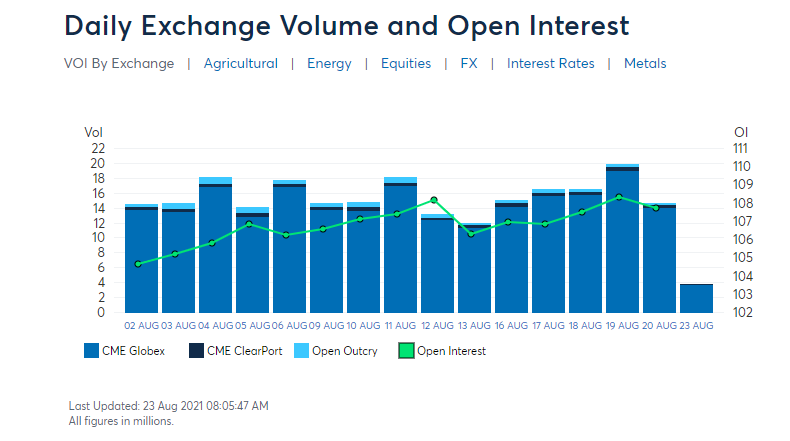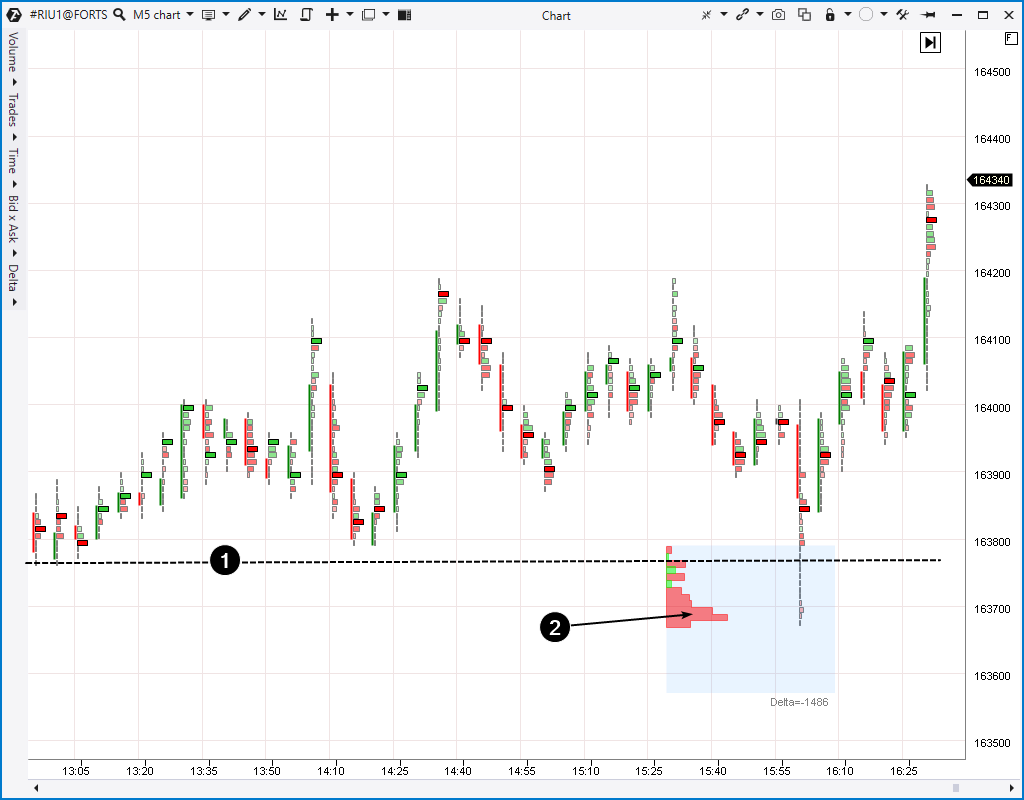Financial derivatives. What are they in simple words
What financial derivatives (or derivative instruments) are. In simple words, they are contracts traded on an exchange, the value of which is determined by underlying (or basic) assets.
In this article, we will give you the basic information, which novice derivatives traders should know:
- What derivatives are. Plain and simple.
- First derivatives in the world.
- Properties of derivative instruments.
- Types of financial derivatives.
- Participants of the derivative market.
- An example of making money in the derivative instrument market.
What financial derivatives are
The word ‘derivative’ originates from the French word ‘dérivatif’ or Latin ‘dērīvātus’. It is connected with the verb ‘to derive’, which means ‘to produce’, ‘to inherit’, ‘to extract’ or ‘to establish the origin’.
Let’s see the derivative idea through an example. Let’s assume that the XYZ company stock is traded on the exchange at USD 100. We also assume that traders John and Jack agreed that John will sell 100 XYZ stocks to Jack at USD 101 in one month and they documented their agreement. So, this agreement is a derivative.
In this example:
- XYZ stock is an underlying asset;
- the agreement of buying/selling 100 stocks in one month is a derivative instrument or financial derivative.
Take heed of the fact that the contract price (USD 101 per one stock) is close to the current stock price (USD 100). In practice, prices of an underlying asset and derivative are often very close and a fall/growth of an underlying asset price clearly correlates with derivative dynamics.
The following instruments can serve as an underlying asset: debt securities, stocks, commodity market instruments (oil, gold, agricultural products and so on), stock indices, currencies, etc. Moreover, other derivatives (for example, futures options) can serve as an underlying asset.
Since many derivatives are traded on exchanges, they are often called ‘exchange derivatives’.
History of derivatives
Financial derivatives have been known since long ago. It is believed that the first derivatives in history were agreements, executed in ancient Mesopotamia in the 18th century BC during the reign of the Babylonian king Hammurabi, who developed a set of rules, in which such agreements were also mentioned.
Also, the risk sharing agreements, which were executed by Babylonian merchants of those times who transported goods by trains of camels, can also be considered derivatives. According to those agreements, merchants received premiums in the event of a successful delivery of goods.
Later, derivatives were mentioned by the Ancient Greek philosopher Aristotle, who lived in the 4th century BC. Then they were used on the Osaka (Japan) commodity exchange when trading rice crops in 1710.
In the course of time, trading through derivatives only increased. According to the World Federation of Exchanges (WFE) data, reflected in the 2019 WFE IOMA Report on Derivative Financial Instruments, 32 billion contracts with derivative financial instruments were executed in the world in 2019.
According to the official August 2021 data, the daily derivative market volume of the CME Group exchanges constituted around 15 million traded contracts.
Derivative properties
The financial derivative properties are:
- Maturity. As a rule, the transfer of rights on an underlying asset takes place not at the moment of executing a contract but after some time. You can find more details on this subject in our article about expiry.
- Speculative nature. Many derivatives are volatile and traded with the use of margin leverage nearly 24 hours during working days with low commission fees, that is why they are actively used by algo-traders, speculators and scalpers for intraday operations. The speculative derivative market nature is intensified by the fact that it is not necessary for participants to perform delivery of an underlying asset. This ‘inflates’ the derivative market volume to irrational values, when the underlying asset volume is much less than the volume of the market of their derivative instruments.
- Ability to reduce risks. Holding underlying assets in possession, investors can include derivative instruments of these underlying assets in their portfolios in order to reduce the overall risk. You can find more details about derivatives and risk management in our article about hedging risks.
Many modern financial derivatives are issued by centralized exchanges. As soon as some derivatives expire, an exchange issues new derivatives, which are nearly similar to the previous ones. That is why standardization is, perhaps, yet another property of popular derivative instruments.
Types of financial derivatives
There are four most common types of derivative instruments:
- forwards,
- futures,
- options,
- swaps.
Further on we will speak about each of them in more detail.
What are forward contracts?
A forward contract is a contract, which is executed between two parties on individual conditions, and under which the settlement takes place on a certain date in the future at the price that has been agreed today.
Main specific features of forward contracts:
- Usually, every contract is developed individually and, consequently, it is unique from the point of view of a contract volume, expiry date, type and quality of assets.
- The contract price, as a rule, is not generally available.
- A contract should be settled through delivery of the agreed volume of an underlying asset on the forward contract expiry date.
What are futures?
Futures are exchange traded contracts for selling or buying basic financial instruments in the future at the previously agreed price. You can find more details about what futures contracts are in our article.
By default, futures and forward contracts are very similar. What are the differences between forward and futures contracts?
| Difference | Futures | Forward |
| Where it is traded | On a centralized exchange | Often – on over-the-counter platforms |
| Terms of agreement | Standardized by an exchange | Often – individual |
| Liquidity | High | Low |
| Price | Public | Not always public |
| Marginality | Yes | No |
| Settlement | Can be sold to any other participant of trades | Settlement is performed only with the counteragent |
What are options?
Options are financial derivatives. They provide the right, but not obligation, to buy/sell an underlying asset in the future.
The main specific feature of options lies in the fact that if an option holder finds the prices unfavourable, he is not obliged to buy or sell the underlying asset at that price. That is why options are mainly used as derivatives for hedging (reducing) risks. We wrote about it in our Options hedging article.
Advanced traders build efficient structures out of derivatives and underlying assets for making money under various market conditions. You can find more details in our 9 options trading strategies article.
What are swaps?
Interest rate or currency swaps are derivative instruments (contracts), which are usually executed by big banks and financial institutions for reducing risks and stabilization of cash flows, assets and liabilities. Swaps are rarely used by regular investors.
Swaps can be useful, for example, if one of the parties owns a bond, under which a floating interest rate is paid, and the other party owns a bond, under which a fixed interest rate is paid. They can use a swap for exchanging interest rate payments under the bonds.
One more swap feature lies in the possibility to reduce the probability of a strong currency movement.
Participants of the derivative instrument market
The popular derivative market is open and free. Pension funds can execute trades with private scalpers here. If you trade, for example, the popular S&P 500 index E-mini futures, you do not know who your counterparty is – it can be a trader from Goldman Sachs or a robot, which was developed in Singapore.
Motives of the participants come down to a benefit either due to risk reduction or due to making profit by the effect of price difference.
Let’s consider 3 common groups of derivative traders:
- Hedger.
- Arbitrageur.
- Speculator.
Hedgers are financial derivative market participants, whose motive is in risk management. For example, one fund owns a position in the stock market. It is its underlying asset. In order to insure (reduce the risk) against a possible underlying asset price fall, the fund acquires a PUT option on it. If the price really falls during the option validity period, the option contract profit will compensate for the main position loss.
Arbitrageur is a market participant, whose goal is to make profit by the price difference of the assets, between which there is a correlation. Since the derivative and underlying asset values are closely connected, a big difference in prices between them opens up good opportunities. In order to make a profit, an arbitrageur buys an undervalued asset and sells an overvalued asset. As a rule, it is performed automatically at the HFT trading level. It is believed that arbitrageurs make markets more efficient and stable.
Speculator is a market participant, whose goal is to make a profit by the effect of the derivative price fluctuations. Perhaps, the most popular instrument for this activity is a futures contract. Stock, index, primary material, interest rate, cryptocurrency and other underlying asset futures attract speculators at the account of:
- low commission fees;
- possibility of conducting margin trading;
- wide selection of available markets;
- high liquidity of popular futures;
- high volatility.
Let’s consider a Moscow Exchange example. For purposes of illustration, we will use such a derivative as the RTS stock market index futures.
Let’s assume that a trader works in the ATAS platform and monitors the futures price action during a day. In the course of time, he takes note of higher peaks and marks the support level (1) near 163800.
Then an effort to break the marked support level takes place. The trader presses F3 button and adds an arbitrary profile to the chart in the Delta calculation mode (2) to see more details. The profile shows accumulation of sell orders a bit below the 163700 level.
Having noticed that the price reverses up and moves further up from the sell cluster, the trader draws a conclusion that a support false breakout, the goal of which is stop loss activation, is being formed. That is why the trader enters a long (say, near 163800). He knows from experience that if the market forms a down false breakout (it refuses to fall), the price will very often increase.
This knowledge, along with the use of the cluster chart, helped him to make money, trading financial derivatives on the Moscow Exchange. Similar setups are also true for other exchanges and time-frames.
Conclusions
A derivative (or a derivative financial instrument) is not a specific asset by itself. Instead, its value is determined by the value of the underlying asset, from which the derivative originates.
Derivative examples are futures, options, swaps and forwards. Their underlying assets are stocks, stock indices, primary materials, bonds, real estate and many other objects, which have value.
Derivatives are used both for risk management and for making a speculative profit.
In order to try deriving benefit from the price fluctuation, download the professional ATAS platform free of charge. It provides rich opportunities for trading financial derivatives all over the world.
Information in this article cannot be perceived as a call for investing or buying/selling of any asset on the exchange. All situations, discussed in the article, are provided with the purpose of getting acquainted with the functionality and advantages of the ATAS platform.





